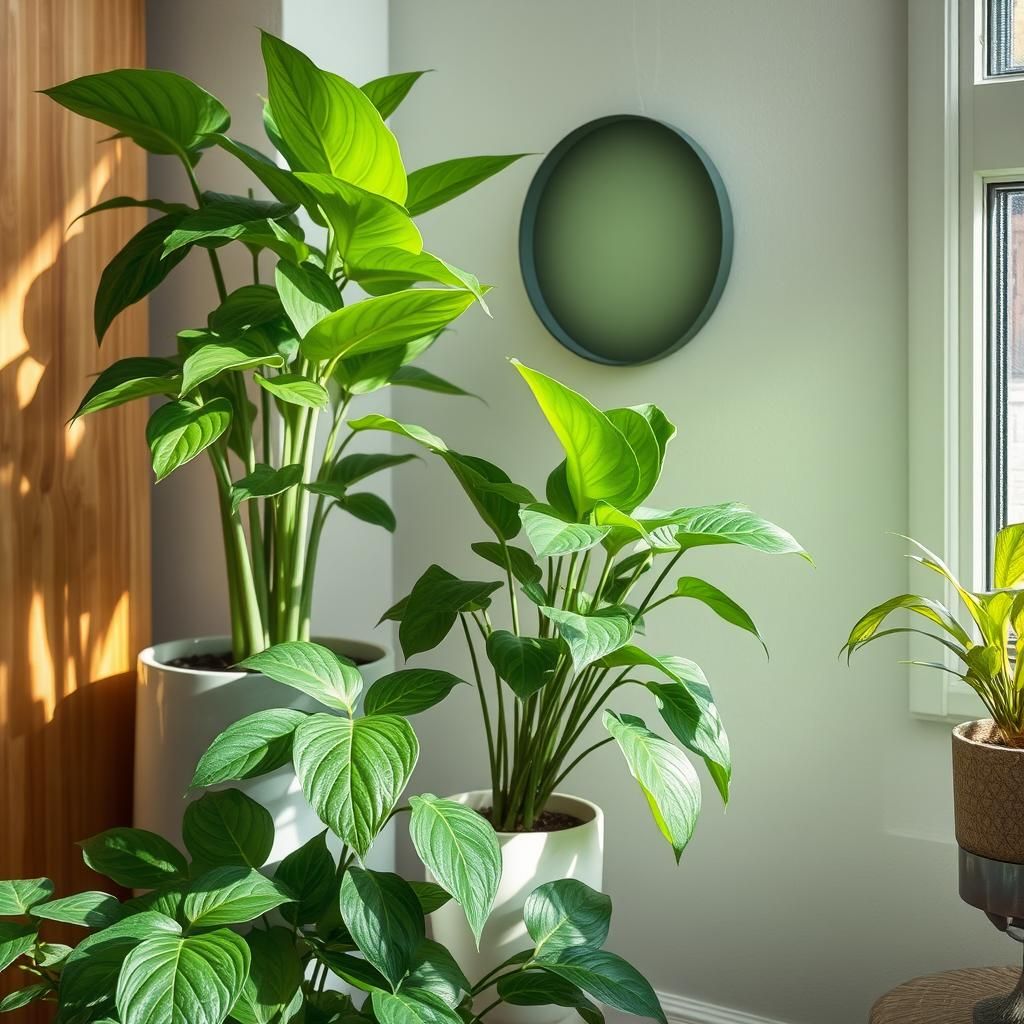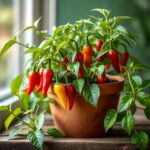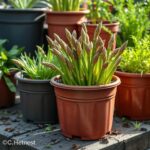What is the easiest low maintenance low light plant to have? Discover the Best Options for Your Home

Indoor gardening can be a rewarding hobby, but not everyone has the time or resources to care for high-maintenance plants. Fortunately, there are several low maintenance, low light options that can thrive in your home with minimal effort. These plants not only add a touch of greenery to your space but also improve air quality and overall ambiance. In this article, we will explore some of the easiest low maintenance low light plants, highlighting their unique features, care tips, and how they can seamlessly fit into your lifestyle. Discover the best choices for your indoor garden sanctuary!
What is the Easiest Low Maintenance Low Light Plant to Have?
The easiest low maintenance low light plant to have is the ZZ plant (Zamioculcas zamiifolia). This resilient houseplant is known for its ability to thrive in low light conditions and requires minimal care, making it an ideal choice for novice and busy plant owners alike. The ZZ plant is characterized by its glossy, dark green leaves that add a touch of elegance to any indoor space. It can tolerate infrequent watering, allowing it to survive even if you forget to water it for weeks. The ZZ plant is also resistant to pests and diseases and can adapt to a range of environments, making it a popular option for office spaces and homes.
Characteristics of the ZZ Plant
The ZZ plant features thick, waxy leaves that are not only visually appealing but also play a crucial role in its low maintenance nature. These leaves store water, which allows the plant to survive in periods of drought. Additionally, the plant grows upright and can reach a height of around two to three feet, making it a stunning addition to any decor. Its slow growth rate means it won’t require frequent repotting, thus reducing the overall maintenance needed.
Light Requirements
One of the best features of the ZZ plant is its ability to thrive in low light conditions. It can tolerate fluorescent lighting commonly found in offices and rooms with minimal sunlight. While the plant will grow best in indirect light, it can survive in nearly any area of your home or workplace, including corners that receive limited sunlight. This adaptability makes it a perfect choice for beginners who may not have the best lighting setups.
Watering Needs
The watering needs of the ZZ plant are incredibly low, requiring only to be watered when the soil has completely dried out. Depending on the environment, this could mean watering the plant every two to three weeks. Overwatering is one of the main causes of plant issues, so it’s important to be cautious and allow the plant to dry out between waterings to avoid root rot.
Pest Resistance
The ZZ plant is relatively resistant to pests, making it an excellent choice for those who want to avoid the hassle of dealing with insect infestations. Common houseplant pests like spider mites and aphids typically avoid the ZZ plant due to its thick foliage and waxy surface. However, regular checks can help ensure that your plant remains healthy and free of any unwanted visitors.
Propagation Methods
Propagating a ZZ plant is straightforward and requires minimal effort. The most common method is through leaf or stem cuttings, which can root easily in soil or water. Because the ZZ plant is a slow grower, patience is key; it may take several weeks for roots to develop. This simple propagation method allows plant owners to expand their collection with ease, making the ZZ plant even more appealing.
| Feature | ZZ Plant |
|---|---|
| Light Requirements | Low light to indirect sunlight |
| Watering Frequency | Every 2-3 weeks |
| Pest Resistance | High |
| Growth Height | 2-3 feet |
| Propagation Method | Leaf or stem cuttings |
What plants endure best at low light?
:max_bytes(150000):strip_icc()/low-light-conditions-houseplants-1902917-834ee8847a324939b796845a6bc22d36.png)
Certainly! Here’s the response to your question:
See also:
Several plants are remarkably adept at thriving in low light conditions, making them ideal for indoor spaces with limited sunlight. These plants have adapted over time to survive in environments where light is scarce. Their ability to efficiently use the available light enables them to flourish without requiring much care. Below are some of the top choices for low-light environments:
1. Snake Plant (Sansevieria): Known for its tolerance to neglect, the Snake Plant is one of the best options for low-light situations.
2. Pothos (Epipremnum aureum): This plant is famous for its trailing vines and can survive with minimal light, making it very versatile.
3. ZZ Plant (Zamioculcas zamiifolia): With its shiny, waxy leaves, the ZZ Plant is extremely hardy and can survive on very little light and water.
4. Peace Lily (Spathiphyllum): While a bit more demanding than others on the list, the Peace Lily can brighten up low-light areas and bloom even without direct sunlight.
5. Cast Iron Plant (Aspidistra elatior): True to its name, the Cast Iron Plant can endure neglect and thrive in dark corners of a home.
Snake Plant (Sansevieria)
The Snake Plant is an excellent choice for anyone seeking a low-light survivor. It has tall, upright leaves that grow in various shades of green. This plant not only tolerates darkness but also helps purify the air by removing toxins. Its minimal watering requirements make it perfect for busy individuals.
- Can survive in infrequent watering.
- Good for beginner gardeners.
- Effective in improving air quality.
Pothos (Epipremnum aureum)
The Pothos is a trailing vine renowned for its decorative heart-shaped leaves. Its adaptability to low-light conditions has made it a favorite among indoor plant enthusiasts. Besides its aesthetic appeal, it gets rid of indoor air pollutants, contributing to a healthier living space.
- Available in various variegated varieties.
- Requires minimal maintenance.
- Can be propagated easily in water.
ZZ Plant (Zamioculcas zamiifolia)
The ZZ Plant is prized for its glossy leaves and resilience against neglect. It can thrive in very low light and requires only occasional watering, making it suitable for anyone with a busy lifestyle. This plant's ability to survive in dire conditions is a testament to its robust nature.
- Requires very little light to thrive.
- Can withstand long periods of drought.
- Practically pest-free.
Peace Lily (Spathiphyllum)
The Peace Lily is not just low-light tolerant but also adds elegance to any interior space with its beautiful white flowers. This plant prefers shady conditions and does well with periodic watering. Its resilience allows it to bloom even in limited light.
- Blooms even without direct sunlight.
- Helps reduce indoor humidity.
- Requires medium watering to maintain health.
Cast Iron Plant (Aspidistra elatior)
The Cast Iron Plant is a tough plant that truly lives up to its name. It can endure low light, humidity fluctuations, and neglect, making it incredibly versatile for indoor environments. With its broad leaves, it adds a robust greenery touch to dim corners in homes or offices.
- Can survive in extreme conditions.
- Minimal need for fertilization.
- Ideal for placements in low-lit rooms.
What plants require the least amount of light?
:max_bytes(150000):strip_icc()/low-light-conditions-houseplants-1902917-834ee8847a324939b796845a6bc22d36.png)
When it comes to low-light conditions, there are several plants that thrive and flourish without needing direct sunlight. These plants are perfect for indoor spaces or shaded areas in gardens where light is limited. Here are some of the most popular ones:
See also:
1. Snake Plant (Sansevieria)
The Snake Plant, also known as Sansevieria, is a resilient indoor plant that can survive in low lighting conditions. This plant is not only easy to care for but also purifies the air. It features long, upright leaves that can vary in color, often showcasing green and yellow variegation. Its ability to withstand neglect makes it a favorite for beginners.
- Requires minimal watering.
- Can tolerate a range of temperatures.
- Effective air purifier.
2. Pothos (Epipremnum aureum)
Pothos is well-known for its cascading vines and heart-shaped leaves. It can thrive in low light and is forgiving if you occasionally forget to water it. Pothos can adapt to different lighting conditions, but it will lose some of its vibrant yellow variegation in darker areas. Its ability to grow quickly and resilience make it a popular choice for indoor settings.
- Grows well in various pot types.
- Can be trained to climb trellises or hang in baskets.
- Tolerates neglect well.
3. ZZ Plant (Zamioculcas zamiifolia)
The ZZ Plant is another excellent choice for low-light areas. It features shiny, dark green leaves that catch the light beautifully, adding a touch of elegance to any space. This plant is incredibly drought-tolerant, making it perfect for those who may not have a green thumb.
- Can survive in very low light.
- Low maintenance and drought-resistant.
- Slow-growing but resilient.
4. Peace Lily (Spathiphyllum)
The Peace Lily is favored not only for its stunning white blooms but also for its ability to thrive in shade. While it does prefer bright, indirect light, it can survive in lower light conditions as well. Peace Lilies are also excellent air purifiers and will wilt slightly when they need water, providing a clear sign of when to water them.
- Blooms beautiful white flowers.
- Indicates when it needs water.
- Helps improve indoor air quality.
5. Cast Iron Plant (Aspidistra elatior)
The Cast Iron Plant lives up to its name by being extremely hardy and tolerant of neglect. It can thrive in low light and doesn’t require much care, making it ideal for less-than-ideal conditions. Its broad leaves can add a lush feel to spaces that lack bright lighting.
- Thrives in a wide range of temperatures.
- Highly tolerant to low light and humidity.
- Can withstand drought.
Questions from Our Readers
What is the easiest low maintenance low light plant to have?
The Snake Plant (Sansevieria) is widely regarded as one of the easiest low maintenance and low light plants. Its ability to thrive in various conditions makes it an ideal choice for beginners, as it requires minimal watering and can adapt to a range of lighting situations.
How often should I water my low light plant?
For most low light plants, including the Snake Plant and ZZ Plant, it's best to water when the top inch of soil is dry. In general, watering once every two to three weeks is sufficient, although this can vary depending on humidity and temperature conditions.
Can low light plants survive in rooms without windows?
While low light plants can survive in rooms with minimal natural light, they generally prefer at least some indirect sunlight. Supplementing with artificial lights can help ensure they receive enough energy to thrive in spaces that lack windows.
Do low maintenance plants attract pests?
Typically, low maintenance plants are less prone to pest issues, but they are not entirely immune. Keeping an eye on their health and cleanliness can help prevent pest infestations, and promptly addressing any issues can ensure your plants remain healthy and pest-free.
See also:

If you want to read more articles like What is the easiest low maintenance low light plant to have? Discover the Best Options for Your Home, we recommend you check out our Pots category.
Leave a Reply
Related Articles